A Scion Society of The Baker Street Irregulars
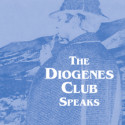
Watson Coins A Phrase (2001)
“There’s money in this case …”
– A Scandal In Bohemia (SCAN)
In The Adventure of the Beryl Coronet, son Arthur asks father, Alexander Holder, for 100 pounds. The father “… was very angry, for this was the third demand during the month. ‘You shall not have a farthing from me’, (he) cried, on which he bowed and left the room without another word.” The farthing — “fourthling,” worth one-fourth of a penny — is the smallest denomination British coin produced during the time period covered in the Canon.
From The Man With the Twisted Lip, “… they hardly found on the mudbank what they had feared to find. It was Neville St. Clair’s coat, and not Neville St. Clair, which lay uncovered as the tide receded. … Every pocket stuffed with pennies and halfpennies — 421 pennies, and 270 half-pennies. It was no wonder that it had not been swept away by the tide.” No wonder, indeed, since the total weight of those coins would have been close to twelve pounds avoirdupois.
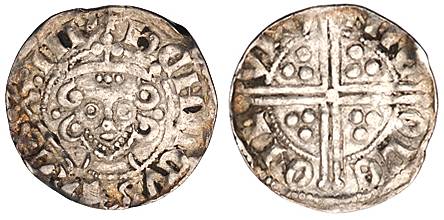
This is the only mention in the canon of the half-penny. Half-pennies were instituted by the government to fill a need for a coin with a value halfway between that of the farthing and the penny. In the first millennium A.D., prior to the introduction of the halfpenny, and during Britain’s numerous coin shortages, a common practice was to cut a penny into two or four parts with a pair of shears. This practice was made easier by the design of a cross on the reverse of the penny (the king’s head was normally on the obverse); it was a simple matter to use the cross as a guide for cutting accurately, and the coin was relatively thin in the interior of the cross. In 1279, Edward I increased the thickness of the cross on the penny in an effort to discourage the practice. At this time Britain also embarked upon a major recoinage, which saw the introduction of the half-penny, the farthing, and the groat (4 pence piece).
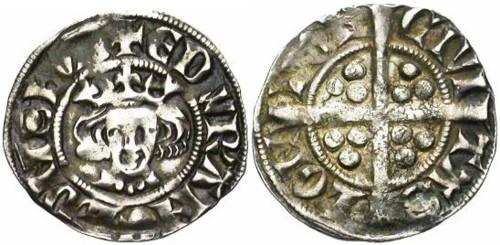
There are numerous references to the penny in the Canon, including that in The Man with the Twisted Lip, cited above.
In A Scandal In Bohemia, as the carriage arrives at the door of Briony Lodge, one of the loafing men dashes forward to open the door “… in hopes of earning a copper.”
In The Adventure of the Missing Three-Quarter, Lord Mount-James says to Cyril Overton, who had engaged Holmes to look for Godfrey Staunton, “Don’t look to me for a penny — not a penny!”
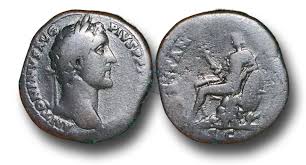
The penny is the oldest British coin still in use. The abbreviation for it is “d” for denarius, relating it back to Roman days. In slang, it was a “copper,” since it was made of copper prior to 1860, bronze after that date. Roman coins began finding their way into Britain in the first century B.C., and circulated along with the native coins. Beginning in 43 A.D., when the Romans occupied the country in force, their sestertius (bronze), denarius (silver), and aureus (gold) became the official coinage of Britain. Hundreds of thousands of these coins have been dug up in the succeeding years. You will recall that Nathan Garrideb’s room contained a case of ancient coins, and, when Holmes and Watson entered, “… he was polishing a coin with a chamois leather — Syracusan — of the best period.”
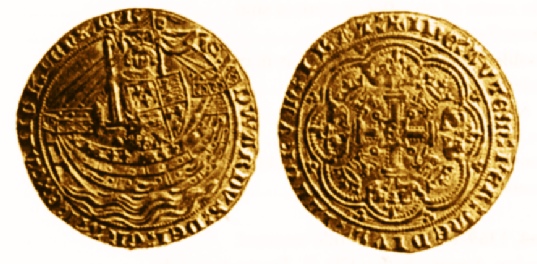
These coins were of the “hammered” type, formed by taking a blob of metal and hammering it by hand between two dies having the obverse and the reverse patterns. These coins vary tremendously in quality and shape, although some very beautiful examples do exist. The irregular edges of hammered coins make it easy for unscrupulous citizens to “clip” or “shave” the edges. A little undetectable slice here, an imperceptible cut there, melt down the scrapings, and turn a bit of a profit. Meanwhile, the coins become smaller and lighter then they were when minted, and by the time the third miscreant takes his turn, some of the design is beginning to disappear. “Clipping” coins was widely practiced, despite the penalty, which was to chop off the culprit’s right hand. The mint at the time it issued the “noble” (mid-fourteenth century) inscribed New Testament Bible verses on the face of the coin near the edge to discourage clipping.
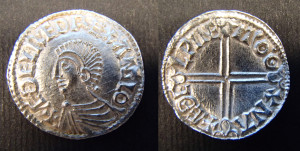
The coins of the chaotic period following the departure of the Romans are relatively crude, improving in quality about 700 B.C. or so. The coins of Aethelred “The Unready” (978- 1016) are found in greater quantities in Denmark than in England because they were use to pay the annual “Danegeld,” a tribute paid to the Danes to, theoretically, keep them from attacking Britain.
Nearly every British ruler had trouble with the coinage, primarily because of an ongoing shortage of precious metals. The prosperous nineteenth century was the first in which there was enough metal for all kinds of coinage, and it was also the first in which there was not an enormous amount of counterfeiting and clipping the edges of coins. Prior to that time, many tradesmen issued private tokens to make up the for shortage of coins. In the twelfth century, the coins were so debased that people would slice through them to check their content. These cut coins were not accepted readily by the public, and to get them circulating again, the mint at that time cut all coins as they were newly issued.
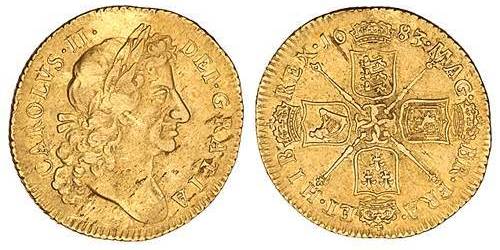
In A Scandal in Bohemia, Holmes, in an attempt to gain information about Irene Adler disguises himself as an out-of-work groom and helps to rub down some horses in the neighborhood. He informs Watson that he … received in exchange twopence, a glass of half and half, two fills of shag tobacco, and as much information as I could desire about Miss Adler, to say nothing of half a dozen other people in the neighborhood in whom I was not in the least interested, but whose biographies I was compelled to listen to.
In A Case of Identity, Mary Sutherland earned “… twopence a sheet …” from her typewriting. In The Resident Patient, Blessington sets up Percy Trevelyan with a medical practice, in return for which Blessington takes three-fourths of the income from the practice and Percy keeps one-fourth. Percy relates, “Every evening, at the same hour, he (Blessington) walked into the consulting room, examined the books, put down five and threepence for every guinea that I had earned, and carried the rest off to the strong-box in his own room.” Note that this confirms the conversion rate of 21 shillings to the guinea, since one-fourth of 21 is 5 and one-fourth shillings, with one-fourth of a shilling equalling three-pence.
It is interesting that the Canon contains so many references to “guineas,” since the guinea did not appear in British coinage after 1813. The explanation is that the British continued to use the guinea as a reference to describe salaries, professional fees, costs of things, and so on, despite the fact that the guinea had been supplanted by the pound and sovereign. First issued in 1663, the coin derived its name from the fact that the Africa Company supplied gold from the region now known as Ghana, but in those days called Guinea.
In reality, there were three gold coins instituted at this time, with the values of 100 shillings, 20 shillings, and 10 shillings, and all were called “guineas” at the time. It was not until some years later that the 20 shilling piece increased in value to 21 shillings and the other two were discontinued or called by other names (i.e. “5 guineas”).
In The Adventure of the Missing Three-Quarter, Godfrey Staunton paid 13 guineas to Dr. Leslie Armstrong of Cambridge, and in Silver Blaze, 22 guineas was the price of a dress. There are at least five other references to guineas in the Canon. Some of the choicest references to coins appear in The Sign of the Four. You will recall that Holmes and Watson, led by Toby, end up at the boat yard. As they approach the house to attempt to hire Mordecai Smith’s launch Aurora, a young curly-headed lad of six comes out the door.
“Dear Little Chap!” said Holmes strategically. “What a rosy cheeked young rascal! Now, (lad), is there anything you would like?”
The youth pondered for a moment. “I’d like a shillin’,” said he.
“Nothing you would like better?”
“I’d like two shillin’ better,” the prodigy answered after some thought.
“Here you are, then! Catch! — A fine child, Mrs. Smith!”
Later in the same story , Holmes summons the Baker Street Irregulars, and, when they arrive, Wiggins tells Sherlock, “Got your message, sir — three bob and a tanner for tickets (“bob” and “tanner” are slang (origin unknown) for a shilling and a sixpence, respectively.)
Holmes gives the boys instructions, and tells them,
“’The old scale of pay, and a guinea to the boy who finds the boat. Here’s a day in advance. Now off you go!’ He handed them a shilling each, and away they buzzed down the stairs, and I saw them a moment later streaming down the street.
There is also a reference in this story to “taking the Queen’s shilling,” a phrase which meant to join the army. It was customary for British Army recruiting officers to present a shilling to each new recruit.
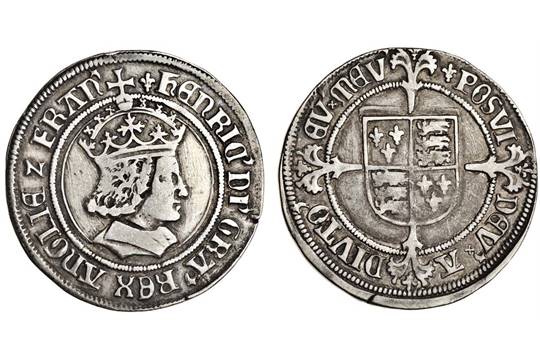
The shilling, a silver coin often called a “testoon” (from the Italian testa for head) at the time of its origin, was introduced by Henry VII. Henry was the first of the Tudor line (late fifteenth century), an able ruler who succeeded in the task of repairing the damage caused by the Wars of the Roses. He took great interest in the nation’s coinage, also introducing the sovereign, a magnificent new gold coin with Biblical texts around the edge to discourage clipping. Henry VII also went back to the profile view of the monarch on the obverse of the coins, after 300 years of full-face depictions. As the Greeks and Romans had understood a millennium and a half before, the profile portrait looks and wears better on a coin than does the full-face portrait.
In Silver Blaze, we learn that Straker had five sovereigns in gold in his pockets when he was found dead on the moor, and in The Greek Interpreter, five sovereigns were paid to Mr. Melas for interpreting. After her wedding to Godfrey Norton, Irene Adler gives a disguised Holmes a sovereign for being a witness, and there are similar references in at least three other stories. Henry VII was followed by Henry VIII, his son, who was notorious for the steady debasement of the metal in his coins. Initially, the debasement made sense, since British coins had a higher bullion value than similar coins on the continent. Unfortunately, when he realized that debasing was profitable he continued the practice until his “silver” coins were only one-third silver and two-thirds copper alloy, thereby earning for himself the nickname of “old coppernose.”
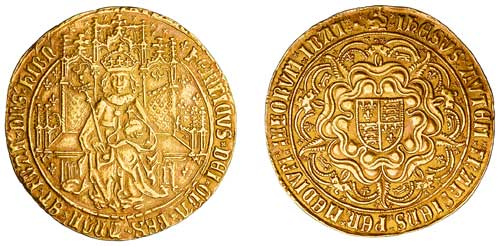
During Queen Elizabeth’s reign, in 1577, Sir Francis Drake sailed across the Atlantic, around South America, and ravaged the Spanish ships carrying Peruvian gold up the west coast of South America to the overland route at Panama. Sailing west across the Pacific, he rounded the Cape of Good Hope and arrived back in England almost three years after he had left. The colossal treasure he brought back in the Golden Hind was estimated to be a million and a half sterling, or between a quarter and a half of the entire annual production of King Philip’s American mines. In retaliation for this and other raids on Spanish ships and ports, Spain launched its famous Armada, which was defeated by the British Navy and a fortuitous storm. From that point on, Britain was a sea power and was ascendant as a world power.
During Elizabeth’s reign, coin-pressing machinery and other innovations were developed by the French, but the British mint employees, fearing loss of their jobs, managed to squelch the innovations. Among the innovations which were thwarted was the graining or corrugating of edges to discourage clipping. Finally, in 1662, machinery for producing coins was introduced and the hand-hammering began to be phased out. Coins were, at last, perfectly circular, and graining or lettering around the edges defeated the clippers. In 1672, the first “modern” coin appeared with the figure of Britannia. The first pattern for this coin had the motto Quattuor Maria Vindico (I claim the four seas), but before the coin could be struck, the Dutch won a resounding naval victory from the English, and the proud claim was dropped.
Prior to 1801, when the Kings of England finally gave up their ancient claim to the French throne, the fleur-de-lis of France was to be found on the shields on the reverses of certain British coins. Along with the fleur-de-lis of France were three leopards (England), a harp (Ireland), and a rampant lion (Scotland).
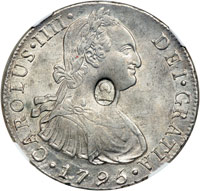
During the reign of George III, coins became extremely scarce due to the wars (American Revolution and Napoleonic War), and due to a scarcity of gold, silver, and, later, copper. At the same time, more coins were needed due to the industrial revolution. In the country, people made do with the barter system and had little need for money, but increasing industrialization caused migration to cities, where money was required to pay wages and purchase goods. By 1797, the shortage of silver was desperate, and the Bank of England had to buy large quantities of Spanish pieces of eight. These coins, bearing the portrait of Charles III or Charles IV of Spain, were countermarked by the British mint with a tiny image of George III, leading to the following rhyme:
“The bank, to make their Spanish dollar pass Stamped the head of a fool on the head of an ass.”
Counterfeiting became a more serious problem than ever during this period. Counterfeiting gold or silver coins was treason, punishable by death or transportation to a colony with an unhealthy climate. On the other hand, counterfeiting copper coins was only a misdemeanor, so the counterfeiters concentrated enthusiastically on the copper coins. They creatively substituted their own mottoes and legends for the official ones used on actual British coins, thereby being able to claim that their creations were not truly counterfeits. The illiteracy of much of the population aided them in their endeavors.
At the end of the Napoleonic Wars (1816-1818), there was a total overhauling of the coinage system. The Royal Mint finally began using steam presses, private tokens were outlawed, the sovereign replaced the guinea, and the country went on the gold standard. (This meant that gold coins had to have the full metal content equal to their stated value, but silver coins did not). The question of whether to adopt the gold standard or adhere to a bimetallic standard featuring both gold and silver was as hotly debated in Britain as it was here in the U.S.
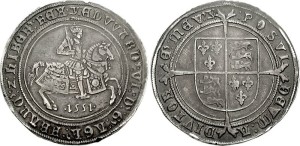
We discover, in The Adventure of the Bruce-Partington Plans, that Mycroft drew 450 pounds a year from the British government. He was a clearing house of information; ministers and departments passed conclusions to him, and he “made out the balance,” deducing how each factor affected the other. You will recall that “bimetallism,” or the “bimetallic question,” was a specialty of his.
Counterfeiting is mentioned in The Adventure of Shoscombe Old Place, wherein Holmes relates to Watson, “Since I ran down that coiner by the zinc and copper filings in the seam of his cuff, they (Scotland Yard) have begun to realize the importance of the microscope.”
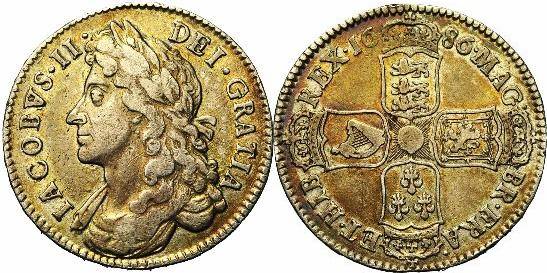
It is also central to the plot in The Adventure of the Engineer’s Thumb. Holmes says, “They are coiners on a large scale, and have used the machine to form the amalgam which has taken the place of silver.”
“’We have known for some time that a clever gang was at work,’ said the inspector. ‘They have been turning out half-crowns by the thousand.”’
Later on, we find that, “Large masses of nickel and of tin were discovered stored in an out-house, but no coins were to be found…”
William S. Baring-Gould, in the Annotated Sherlock Holmes, says, it is to be doubted that Watson has correctly quoted Holmes, the chemist, in this sentence. “Had amalgamation really been carried out on a large scale,” Mr. Bliss Austin wrote in “thumbing his way to fame,” “there should have been a considerable quantity of mercury about (since mercury is a necessary ingredient in any amalgam), yet the Canon states specifically that the firemen found only ‘large masses of nickel and tin … “…Nor could the material used to make the spurious coins have been an amalgam of nickel or tin, because the former does not amalgamate with mercury at all, and the latter does so to such a limited extent that it would have been of little use for this purpose.”
Half-crowns are mentioned frequently in the Canon; for example, in Silver Blaze, Holmes tried to give the groom at Mapleton stables a half-crown, and in The Man With the Twisted Lip, Holmes gave the buggy driver a half-crown to leave the horse and buggy for Holmes’ use.
Other mentions of counterfeiting in the Canon refer to bogus paper money, as in The Three Garridebs, where Killer Evans murdered Rodger Prescott, “… a forger and coiner in Chicago.” Yet another reference to counterfeiting occurs in The Crooked Man, when Henry Wood’s Landlady “… mistook a rupee for a bad florin.” The florin was introduced in 1849 in an attempt to go to a decimal system of coinage; since the florin was worth two shillings, and there were twenty shillings to the pound, there were ten florins in each pound. The first issue of this coin produced a minor scandal, since it lacked the phrase Dei gratia or its abbreviation D.G. (“by the grace of God). Known as the “Godless” florin, it was replaced in 1851 by a florin with “D.G.”
Not mentioned in the Canon, but also minted in Britain and its colonies at various times in the past, were coins with the values of one fourth farthing, one-third farthing, one-half farthing, two florins, and one-and-one-half pence. A silver penny was also minted for a time in addition to the copper one.
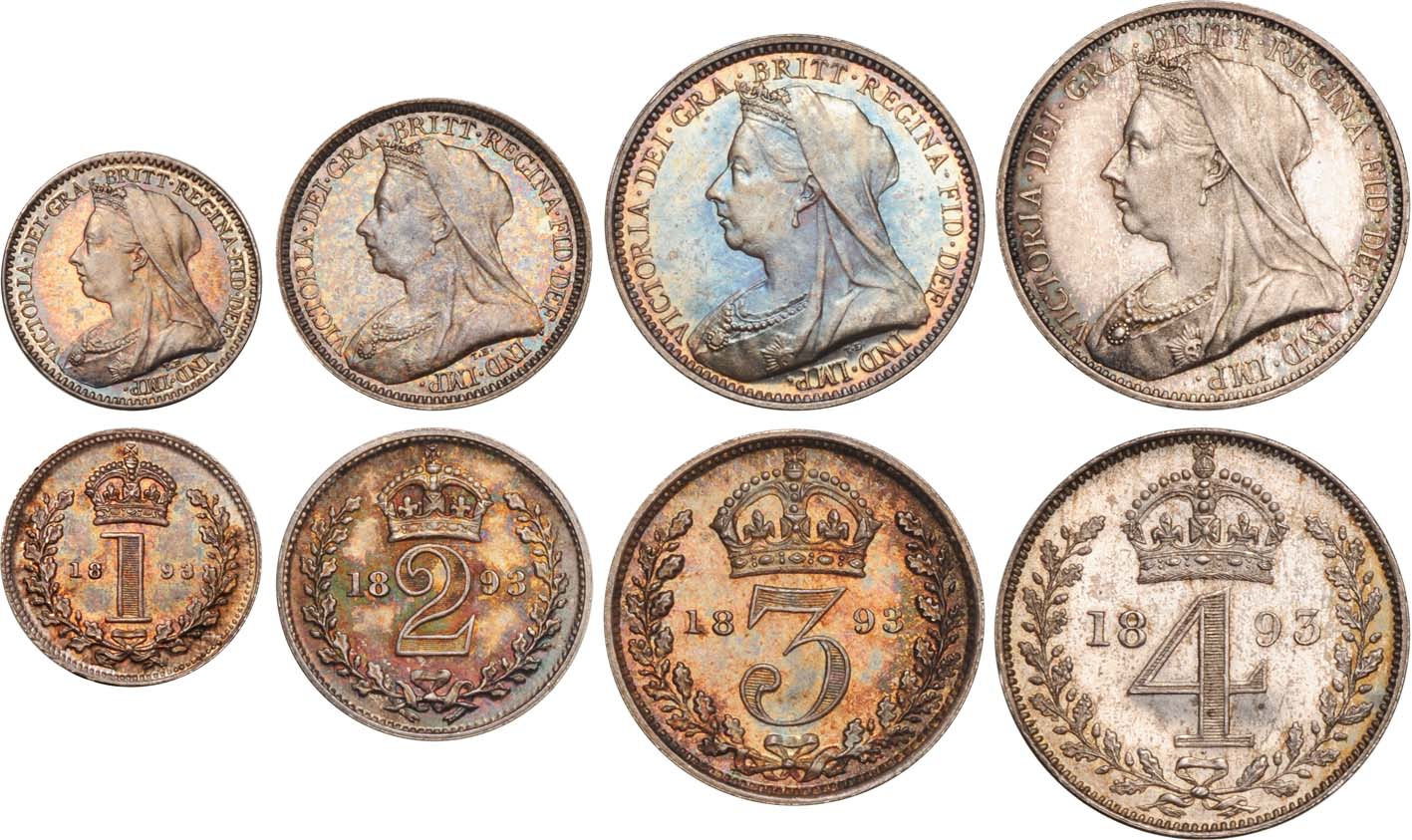
Also worthy of note is the so-called “Maundy Money,” consisting of four coins: one, two, three, and four pence (“groat”). The Maundy coins were distributed to certain poor persons on Maundy Thursday.

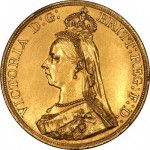
Beginning in 1839, two years after her reign began, a portrait of young Queen Victoria appeared on British coins. This attractive portrait was not replaced until 1887 (her Golden Jubilee) when she was close to seventy. The so-called “Jubilee Head” coins issued from 18871893 feature a fine character study of the Queen as an older woman. Another portrait of the Queen as an older woman — the so-called “Old head” — is found on coins from 1895. Some coins of this issue have Pistrucci’s famous St. George and the Dragon on the reverse.
Following Queen Victoria, British coinage remained much the same, save for the current monarch’s portrait replacing his/her predecessor’s, until 1946 when silver was replaced with cupronickel in the smaller coins. The inevitable result of this was the disappearance of the silver coins from circulation, as happened in the U.S. In 1967, decimal coinage was begun in Britain.
Although coins do not play a prominent role in most of the Canon, frequent references to the use of coins in everyday transactions help to transport us all back to the days of Holmes and Watson, “where it is always 1895!”
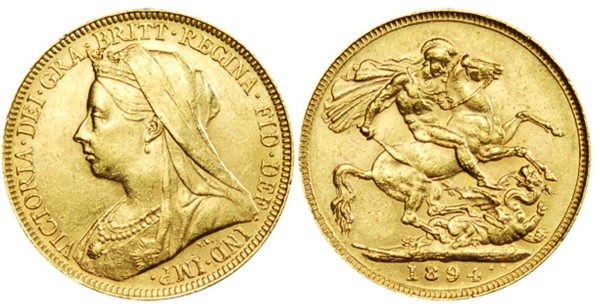
BRITISH COINAGE — CONVERSIONS
4 Farthings = 1 Penny
12 Pence = 1 Shilling
2 Shillings = 1 Florin
5 Shillings = 1 Crown
20 Shillings = 1 Pound
20 Shillings = 1 Sovereign
21 Shillings = 1 Guinea
BRITISH COINS MINTED IN 1895
Copper
Farthing, Half Penny, Penny
Silver
3 Pence, 6 Pence, 1 Shilling, 1 Florin, Half Crown, 1 Crown, Maundy Set (1p, 2p, 3p, 4p)
Gold
Half Sovereign, Sovereign, 2 Pounds, 5 Pounds

John Durein was introduced to Sherlock Holmes at the age of 12 when his father gave him The Complete Sherlock Holmes and he began his study of the Canon. In 1977 as a teacher of mathematics at Carmel High School, he became a member of the Diogenes Club of the Monterey Peninsula with the investiture name of, “Ian Murdoch”. He is a charter member of the Monterey Bay Aquarium at which he can visit the Lions Mane whenever he wishes. This year he was honored to become a member of the BSI with the investiture name of, “Wilson The Notorious Canary Trainer”. He is a numismatist and he also enjoys hiking, fishing, spoiling his grandchildren, indulging in all things Sherlockian, and, of course, training canaries.
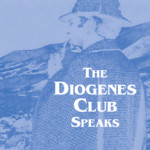 This article was originally published in The Diogenes Club Speaks, edited by Walter Jaffe and Michael Keen, in 2001. It is still available from the Battered Silicon Dispatch Box, by clicking HERE. Thanks to the 20th Garrideb, Dr. George A. Vanderburgh for alerting us to this!
This article was originally published in The Diogenes Club Speaks, edited by Walter Jaffe and Michael Keen, in 2001. It is still available from the Battered Silicon Dispatch Box, by clicking HERE. Thanks to the 20th Garrideb, Dr. George A. Vanderburgh for alerting us to this!
